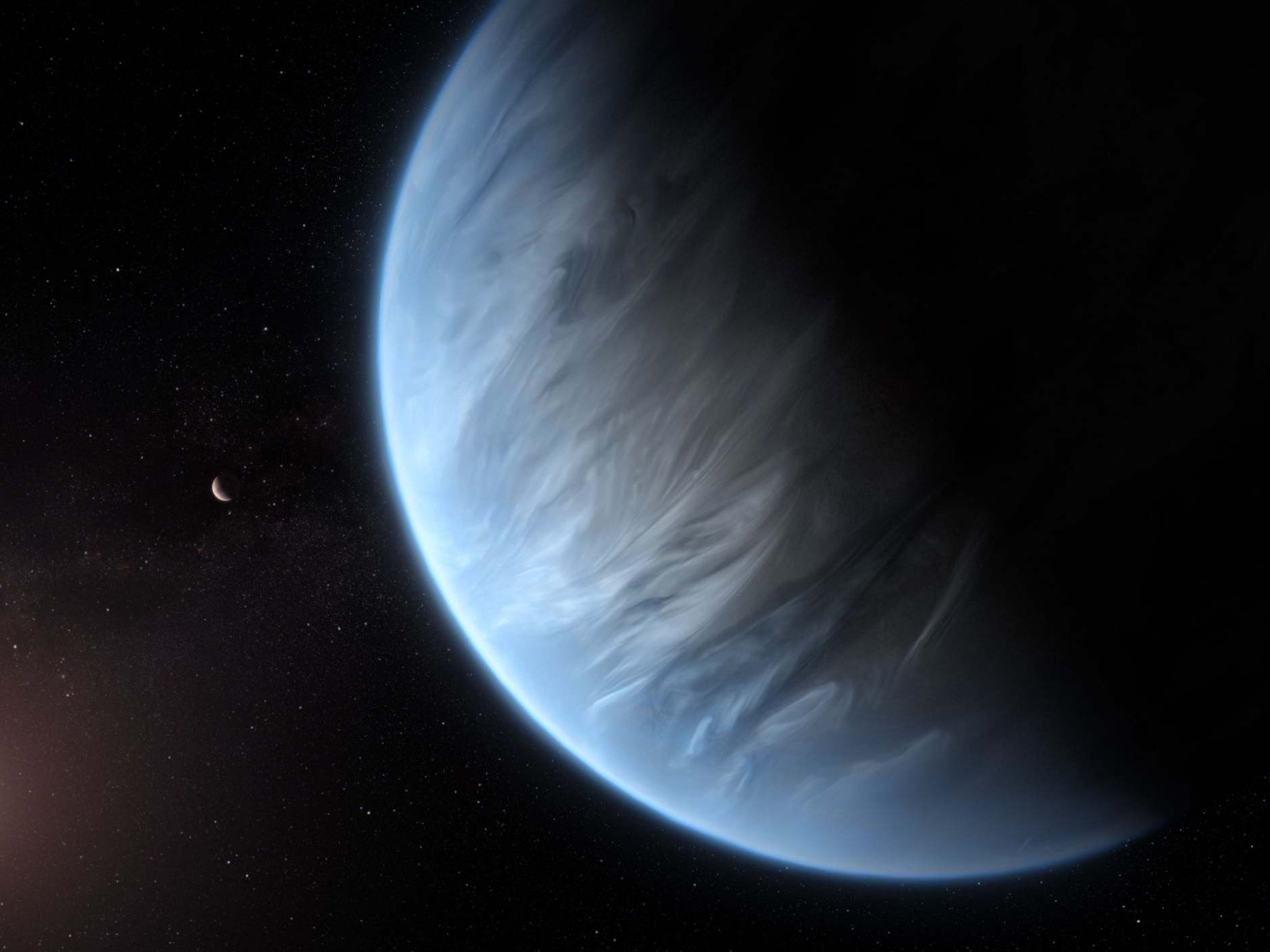Water is found on habitable alien exoplanet for the first time, scientists say
‘This represents the biggest step yet taken towards our ultimate goal of finding life on other planets, of proving that we are not alone,’ says astronomer
Scientists have found water vapour on a “super-Earth” for the first time – in a major step forward in the search for alien life.
The exoplanet, known as K2-18b, is perhaps the best candidate seen yet for supporting life on another world.
“This represents the biggest step yet taken towards our ultimate goal of finding life on other planets, of proving that we are not alone,” said University of Montreal astronomer Bjorn Benneke, who worked on a study of the planet.
“Thanks to our observations and our climate model of this planet, we have shown that its water vapour can condense into liquid water. This is a first.”
Scientists suspect that further study of K2-18b could reveal even more molecules that are key to life on Earth, such as nitrogen and methane. They also say that further examination of more than 4,000 other exoplanets could reveal other similarly promising worlds.
Though the exoplanet was first spotted in 2015, new research has finally allowed scientists to reveal the existence of water.
Current equipment is only able to determine basic factors such as distance, mass and temperature but sophisticated tools developed at University College London helped translate existing data from the Hubble Space Telescope to make sense of the unique molecule signatures of water vapour.
K2-18b is classed as a super-Earth because it is bigger than our Earth – twice as big, as well as eight times heavier.

K2-18b is too far away for astronomers to see, but they can look at how starlight is filtered through the planet’s atmosphere as it passes around its own sun, called K2-18.
The planet is a lot closer to its star than Earth is to the Sun, meaning it only takes around 33 days to transit.
“It’s the only planet outside our solar system that we know has the correct temperature, an atmosphere and water,” said lead author Dr Angelos Tsiaras.
“Of course, K2-18b is not a second Earth, because it is a planet that is much bigger, has a different atmospheric composition. It’s orbiting a completely different star, so it doesn’t look like Earth.
“The search for habitable planets, it’s very exciting, but it’s here to always remind us that this is our only home and it’s probably out of the question if we will be able to travel to other planets.”
Although the planet sits in the habitable zone, scientists say that instruments available at present are not able to determine any signs of life.
Many more observations are needed to be sure that it is habitable.
Scientists, who have published their findings in the Nature Astronomy journal after more than a year of work, believe that the water content could be as low as 0.01 per cent or as high as 50 per cent.
“We don’t know how much water there is; however, what these models clearly say is that there is an atmosphere and that there is water there,” said co-author Dr Ingo Waldmann.
Researchers do not think K2-18b is the only potentially habitable super-Earth and expect to find others with similar characteristics among more than 4,000 exoplanets that have already been discovered.
They hope that newer technology, such as the James Webb Space Telescope due to launch in March 2021, will unlock more secrets beyond our solar system.
“We are looking forward to the next generation of telescopes and going even further,” Dr Tsiaras added.
Additional reporting by Press Association
Join our commenting forum
Join thought-provoking conversations, follow other Independent readers and see their replies
Comments
Bookmark popover
Removed from bookmarks